As I have a large collection of articles I thought I’d add a page devoted to some notable existing cars, and their stories.
Mark Field's Spitfire Le Mans Racer Replica ADU 1B
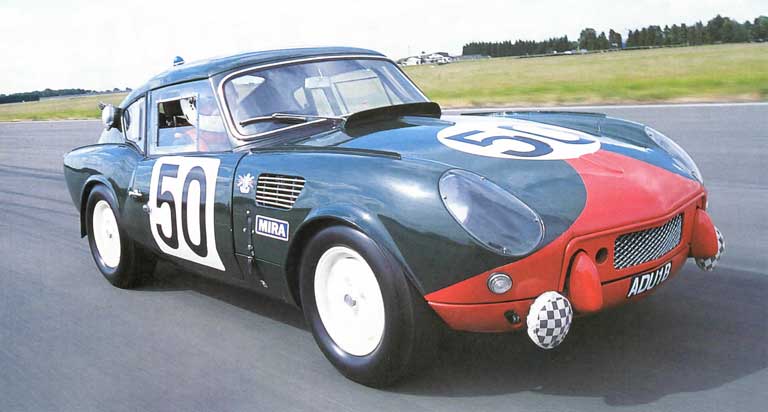
In 2004, Barry Blakeley tested a replica of the 1964 Triumph Spitfire, ADU 1B, at the MIRA proving ground. The car was built by Mark Field over 14 years for the Classic Le Mans race.
Field’s project began after he acquired original magnesium wheels from the works Le Mans Spitfires. Despite being told it “couldn’t be done,” his determination led him to meticulously research and construct the replica. This involved fabricating a unique chassis and body panels, and sourcing rare original parts from around the world with help from a network of Triumph enthusiasts and ex-factory engineers.
The car is powered by a potent, period-correct 1,147cc engine. Field was so committed to authenticity that he spent years finding specific parts, like special Lucas headlights. He also deliberately changed the car’s identity to replicate a Spitfire known to no longer exist, ensuring his replica would not devalue any surviving original cars. He insisted the car be officially documented as a replica, despite authorities believing it contained enough genuine parts to be considered an original.
The successful test at MIRA confirmed the car’s performance and readiness for its intended purpose: to compete at Classic Le Mans. The first outing was in the 2004 Le Mans Classic although head gasket failure forced retirement. Undeterred, Mark raced ADU 1B in every one of the biennial Le Mans Classic events since, except 2008 when serious illness stopped him. Meanwhile Mark built two more Le Mans Spitfire replicas: ECD 261C and ADU11B.
In 2014 Mark entered all three cars for that years Le Mans Classics, and although only ADU1B was accepted the other two were taken to be exhibited in the paddocks. The significance of 2014 was that it was 50 years since the first outing of the Le Mans Spitfire. Drivers Alistair Pugh and Luke Wos (of Wos Performance) completed 17 laps in 2 hours 36 minutes.
The original ADU1B, first registered in 1964, was entered in the Le Mans 24 hour races of 1964 and 1965 but on both occasions did not finish. The most successful of the original four factory race prepared Spitfires were ADU2B (3rd in class – 1964 Le Mans) and ADU4B (1st in class – 1965 Le Mans).
Since the sad closure of Mark and Jo Fields business, Jigsaw Racing Services, Mark has been able to retain his three precious Spitfires and he now operates an eBay business selling spares and uprated parts called lemans-r.
Dorset & Bournemouth Constabulary Traffic Car
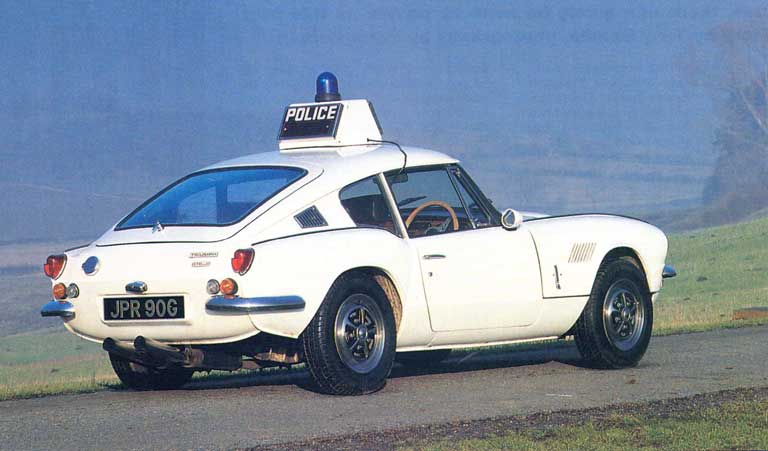
JPR90G was first registered on 8th November 1968 and kitted out for her tour of duty as a marked traffic car for the Dorset & Bournemouth Constabulary.
“There was (and still is) a lot of nonsense talked about how traffic cars are tweaked and souped up , this is not true. The reason people think this is because of the performance police drivers get out of their cars, and that can be put down to superior driving skills. The only non-standard equipment fitted to the GT6 was a Police/Stop sign on the roof with a blue flashing light, two tone horns , spotlights, VHF police band radio and a calibrated speedometer in addition to the standard one” (Triumph World).
Geoff Taylors GT6 Mk2
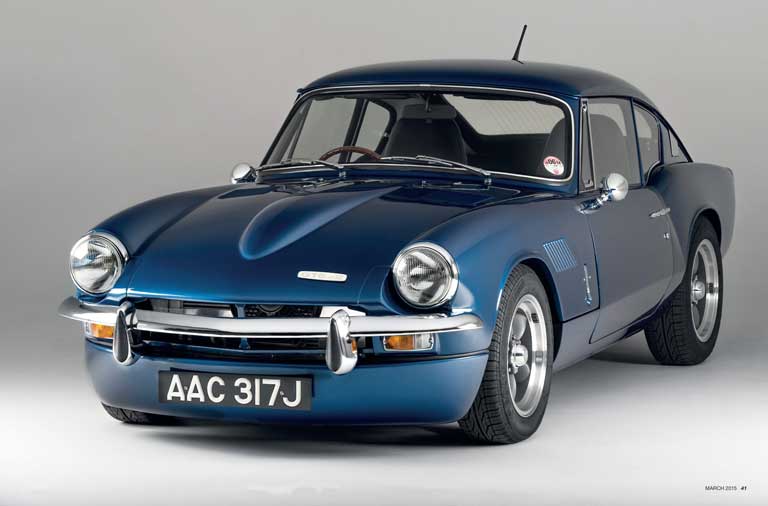
This stunning 1970 GT6 Mk2 belongs to Geoff Taylor of Taylor Automotive.
Geoff started Taylor Automotive with the intention of being a freelance automotive engineer. This allowed him to choose the projects and people he worked with. The most influential of these was Frank Catt of Wealden Engineering Development. Working with Frank over a seven year period on numerous projects from GT40 & Cobra replicas to single seater motor bike engined racing cars proved both interesting and hugely valuable in terms of practical experience which Geoff applied to this GT6.
What could have been an “expensive, avoidable and embarrassing” mistake became a decade-long passion project that culminated in a stunning, one-of-a-kind car and the launch of its owner’s own business.
This GT6 has an impressive specification. The engine is uprated to around double the original horsepower and its location was moved backwards around 7 inches. The gearbox is a Mazda 6-speed and the differential is a Sierra Cosworth limited-slip. Fitting this diff required modifications to the rear chassis with a new carrier platform. The floor and transmission tunnel are also bespoke.The suspension features inboard coilovers, a bespoke unequal length wishbone setup and freshly powdercoated rocking arms. Rose joints can be seen throughout, and replacement cast uprights (items for an earlier GT40 project) are also in use. Bespoke front turrets have been fabricated to allow for the nearby positioning of the engine’s dry sump tank.
Two Racing GT6 Legends
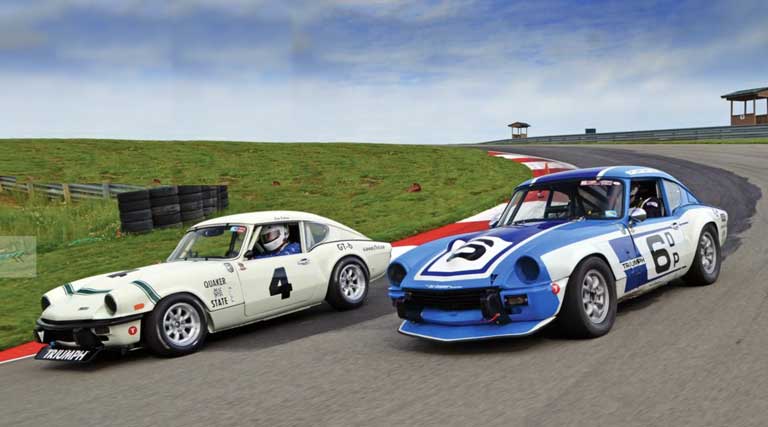
The above cars have been covered in the Racing page of this website. Both are 1972 GT6 Mk3’s which practically came off the same production line. Both are extant and belong to Jim Dolan, a prominent car collector known for his involvement with the Shelby American Automobile Club (SAAC) and his passion for vintage cars, as evidenced by his roles as chairman of the SAAC Foundation and the Pittsburgh Vintage Grand Prix.
The car on the left is the famous Group 44 GT6 Formed during the early-1960s by Bob Tullius and Brian Fuerstenau, Group 44 Inc. remains one of America’s most successful racing teams, with its cars renowned for their distinctive green and white liveries, impeccable preparation, and countless victories. This ex-Group 44 Triumph GT6+ was driven in period by Mike Downs, Brian Fuerstenau, and Bob Tullius, and secured the SCCA National Championship at the American Road Race of Champions (ARRC) at Daytona in 1969, where the GT6+ swept the E-Production podium. This car was sold at Auction by RM Sothebys in August 2012 for $55,000, a record for a GT6. It was originally discovered as a “barn find” and restored by Classic Motorsports magazine in 2005.
The car on the right is the GT6 prepared by Kas Kastner.. He bought it direct from Leyland and campaigned it for the 1972 season. Jim Dolan bought it in 2014 from “Bring-a-trailer and it is still raced by his sons.
Chuck Gee's Racing GT6
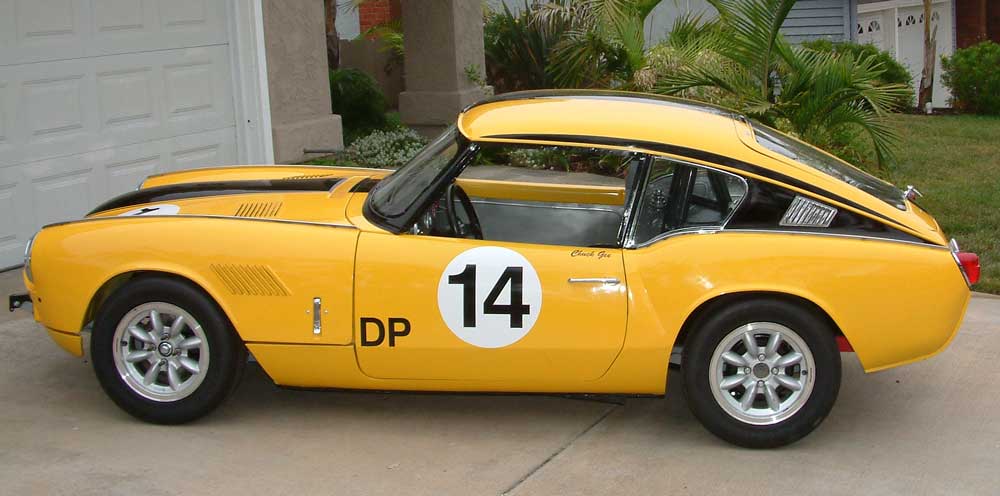
The build of this GT6 was the subject of Kas Kastners book “Las Kastner’s Triumphs, Race Cars, Street Cars and Special Cars” (see My Triumph Books).
Motorworks GT6 Mk1 Resoration
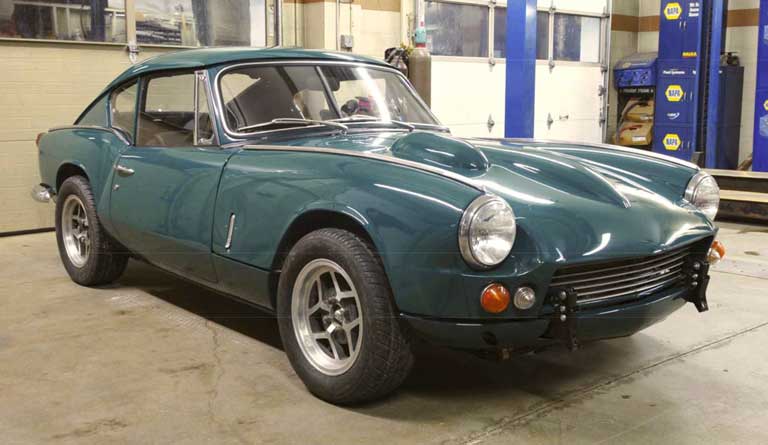
This 1967 GT6 Mk1 was restored by MotorWorks in DeKalb in Illinois. The specification includes a modified 2.5L TR6 engine and a Ford (type 9) 5 speed transmission conversion. The restoration, their most ambitious to date (2012), was documented in detail in an eBook which I downloaded.
They claim that, what makes this project special is not just the size, scope and attention to detail but the “exotic list of modifications enough to make any auto enthusiast drool”.
The engine was rebuilt by C.A.R. Components the rebuilding arm of the Roadster Factory in Armagh, Pennsylvania:
They had trouble shoehorning the “bigger” engine into the GT6. The dimensions of the 2.5L engine is identical to the 2.0L but the longer throw crank necessitates a slightly larger oil sump. In the end they raised the engine so the carburettors would not clear the bonnet so they fitted a “blister” to the side of the normal bonnet hump (see photo).
The Ford gearbox was sourced from Frontline Spridget in the UK. “The Ford type 9 transmission is strong, light, has different ratios and other options available. It shifts like butter and was used in the European turbocharged Merkur XR4Ti sport sedan (1985 to 1989)”.
To download their eBook click here.
